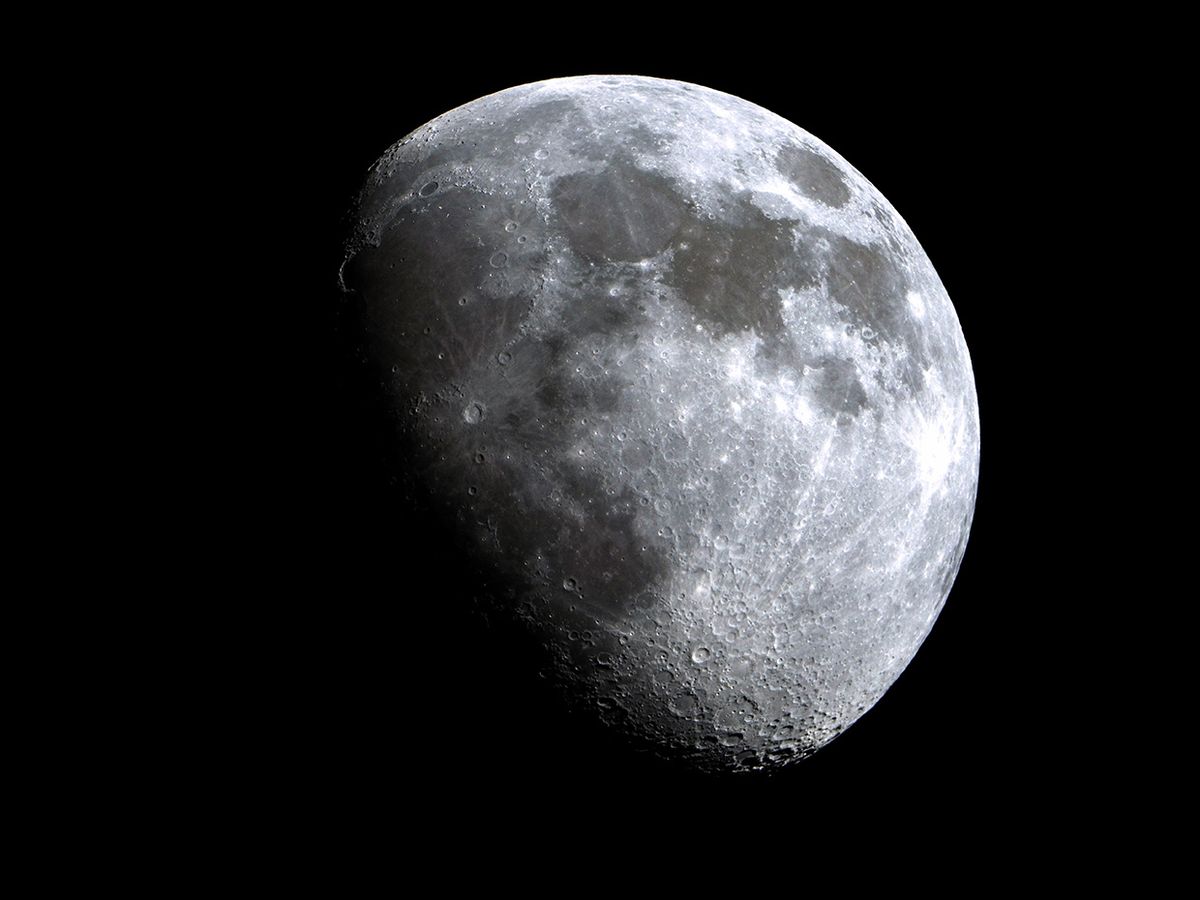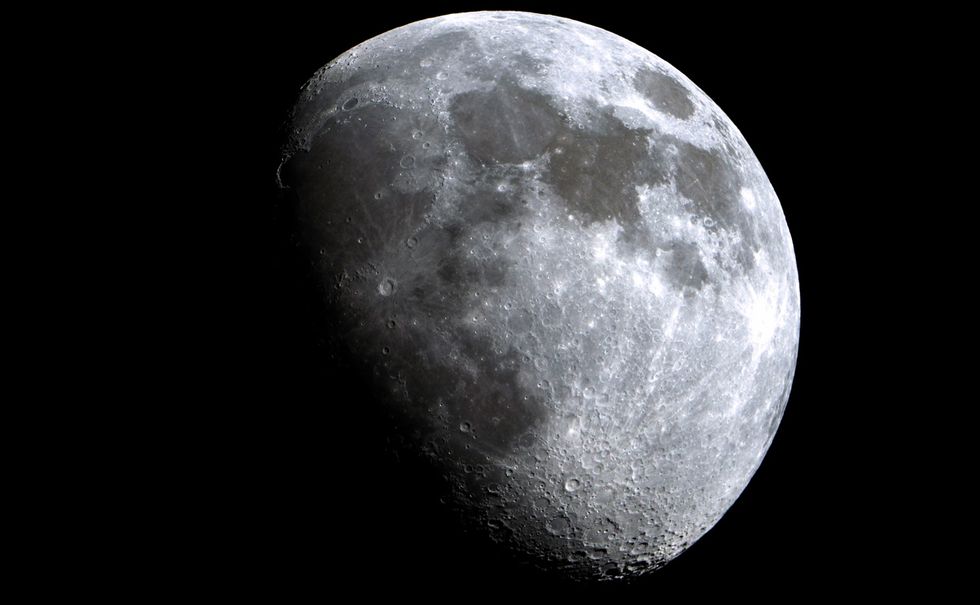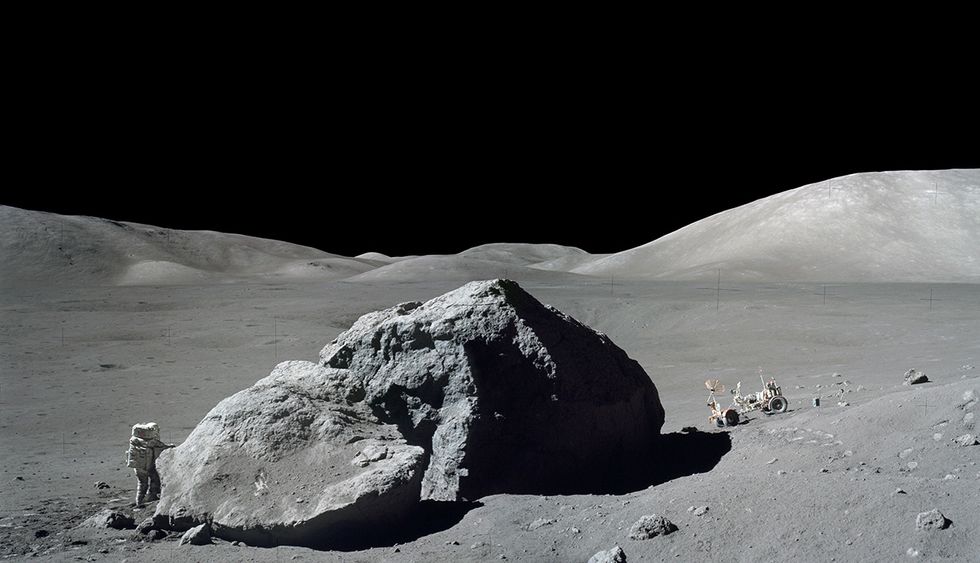The Great Moon Rush
NASA and its partners are already building the rockets and habitat, navigation, and communication systems that will let people live in lunar colonies indefinitely


Fifty years ago this month, two people walked on the moon. It was by any measure a high point in human history, an achievement so pure and glorious that for a moment, anyway, it seemed to unite the world’s fractious, cacophonous communities into a kind of triumphant awe. Over the next three and a half years, 10 more people had the honor of leaving tracks on another world. And then it all came to a halt.
It’s time to go back, and this time for a lot more than a series of multibillion-dollar strolls.
After decades of scattered objectives and human missions that literally went nowhere (aboard the International Space Station), the world’s space agencies are coming into surprising, if delicate, alignment about returning to the moon and building a settlement there. NASA is leading the charge, with new and aggressive backing from the White House. The U.S. space agency has officially declared its intention to return humans to the moon by 2024—although many observers question whether it can adhere to such an ambitious timetable.
So far, NASA and its partners have drawn up the most detailed plans and spent the most money. But the enthusiasm goes far beyond the United States. This past April, Zhang Kejian, director of the China National Space Administration, said the country planned to build an inhabited research station near the moon’s south pole “in about 10 years.” China has the world’s second-largest space budget behind the United States, and it has already put two landers and two rovers on the moon.
Even before China’s announcement, Russia had declared its intention to land cosmonauts on the moon in 2031 and to begin constructing a moon base in 2034. The head of the European Space Agency, meanwhile, has been promoting a concept called the Moon Village—an international settlement that would support science, business, and tourism on the lunar surface.
Regard all of these plans and dates skeptically (particularly the Russian ones), but don’t dismiss them as pipe dreams. Unlike the Apollo-era space race, this time around the rush to the moon isn’t being driven solely by space agencies and national pride. The past two decades have seen the emergence of a commercial space industry, with companies building rockets and rovers and pursuing more speculative goals. In the United States, this private-sector enterprise is fueled in part by the spacefaring visions of two famous billionaires, Jeff Bezos and Elon Musk.
NASA’s scheme for lunar exploration may have room for these companies, but the agency’s plan is very much in flux, and it has already drawn fire from experts who find it needlessly complicated. It depends on a small space station in high lunar orbit—called the Gateway—that would serve as a combination way station, storehouse, assembly facility, and laboratory for people and equipment traveling between Earth and the moon. NASA insists such a station is necessary because the spaceships it’s currently developing don’t have the propulsive capacity to go directly to low lunar orbit. The agency also says that operating the Gateway will give it deep-space experience for a crewed mission to Mars. But outsiders have attacked the idea as an unnecessary expense and an additional point of vulnerability, with one former NASA administrator going so far as to call it “stupid.” For a detailed consideration of the pros and cons, turn to “NASA’s Lunar Space Station Is a Great/Terrible Idea.”
The Gateway plan, which NASA began formulating nearly a decade ago, calls for a very large rocket to ferry people and supplies to the orbiter, as well as a fleet of landers to travel between the Gateway and the moon’s surface. The first version of the rocket, known as the Space Launch System (SLS) Block 1, is designed to carry a crewed space capsule called Orion that will weigh 23 metric tons. The SLS has been under construction for eight years by a consortium led by Boeing and including United Launch Alliance, Northrop Grumman, and Aerojet Rocketdyne. So far it has cost about US $17 billion and is three years behind schedule.

Orion, meanwhile, is being built by Lockheed Martin with help from the European Space Agency and Airbus, and is supposed to support six astronauts. The Orion partners are officially planning to launch a test mission in 2020 or 2021 (stay tuned), in which an unoccupied Orion will go into orbit around the moon and then return to Earth.
Until this past March, NASA had been aiming for a moon landing in 2028, but under pressure from the Trump White House the agency moved its target up to 2024. And that’s where the billionaires could come in. Musk’s and Bezos’s rocket companies, SpaceX and Blue Origin, are both developing heavy-lift rockets capable of reaching the moon. At its highest levels, NASA remains committed to the SLS rocket and the Gateway. Nevertheless, the agency has also sporadically flirted with the idea of Orion being lofted by SpaceX or Blue Origin rockets, which some observers insist are being developed at a swifter pace than the SLS.
Both companies seem up for the challenge: SpaceX already has a contract with NASA to build crewed spacecraft to ferry astronauts to the International Space Station. And Blue Origin is building both heavy-lift rockets and a crewed lunar lander, named Blue Moon, which Bezos says will be ready for action in 2024. Even if NASA doesn’t employ their services, it’s entirely possible that one or both of these companies will go it alone. In a feature article about Blue Origin’s BE-4, IEEE Spectrum contributor Mark Harris appraises a rocket engine that could launch a new era in space exploration.
Clearly, the establishment of a reliable and efficient system for moving cargo and crew to the moon’s surface is an enormous undertaking. Big as it will be, it won’t make much sense unless it’s just the opening act of an epic saga in which humans establish a permanent presence there. As we explain in this special report, taking up residence on the moon will involve stupendous challenges.
For example, in “Engineers and Architects Are Already Designing Lunar Habitats,” Matthew Hutson spotlights plans for dwellings that can withstand extreme temperatures, withering radiation, and moondust so abrasive it can eat through a space suit. One of the most promising building techniques uses that very dust, technically known as regolith, as raw material for 3D printers.
Navigating in the bleak lunar landscape will also be tough. With no GPS to guide them, astronauts in a rover could easily get lost in an endless ashen expanse. In “Robots Will Navigate the Moon With Maps They Make Themselves,” we describe how space startups are solving the problem with extraordinary feats of mapping-on-the-fly. One company, Astrobotic, says its simultaneous localization-and-mapping software will also guide rocket-powered drones that will explore the moon’s lava tubes. These huge natural underground tunnels are candidates for next-generation settlements, as they offer more moderate temperatures and shielding from radiation.
To be truly sustainable, a lunar settlement will have to make use of local resources. So engineers are already designing the mining operations that will extract water ice from the regolith in the moon’s permanently shadowed craters. The infographic “Squeezing Rocket Fuel From Moon Rocks” explains how those water molecules can then be split into hydrogen and oxygen, basic components of rocket propellant.
If we master these and other challenges, we’ll be poised for a great leap. In the second half of the 20th century, as humankind began taking the idea of spaceflight seriously, a base on the moon was invariably regarded as the logical perch from which to study, and eventually spread out into, the solar system. What we learned then was that space exploration timetables are long, and political will capricious. But now, as it did in the 1960s, the United States finds itself in a fast-moving great-power rivalry. As it was then, it is inclined to a showy demonstration of technological prowess. And this time the endeavor has the backing of billionaires on a mission.
All that might just be enough to get humans back to the moon. To make a permanent home there, though, will take something more. Such as? Well, international cooperation on a scale seldom seen outside of warfare comes to mind. Our biggest comparable model of colonization is Antarctica: many separate bases, each built and maintained by a different country. It is difficult to imagine that on the moon.
Perhaps the goal of living on the moon will at last provide an objective so grand and sublime that it will unite nations that compete economically. Eventually, it might even unite ones that compete geopolitically. It would be a fitting start to humankind’s final migration.
This article appears in the July 2019 print issue as “The Coming Moon Rush.”